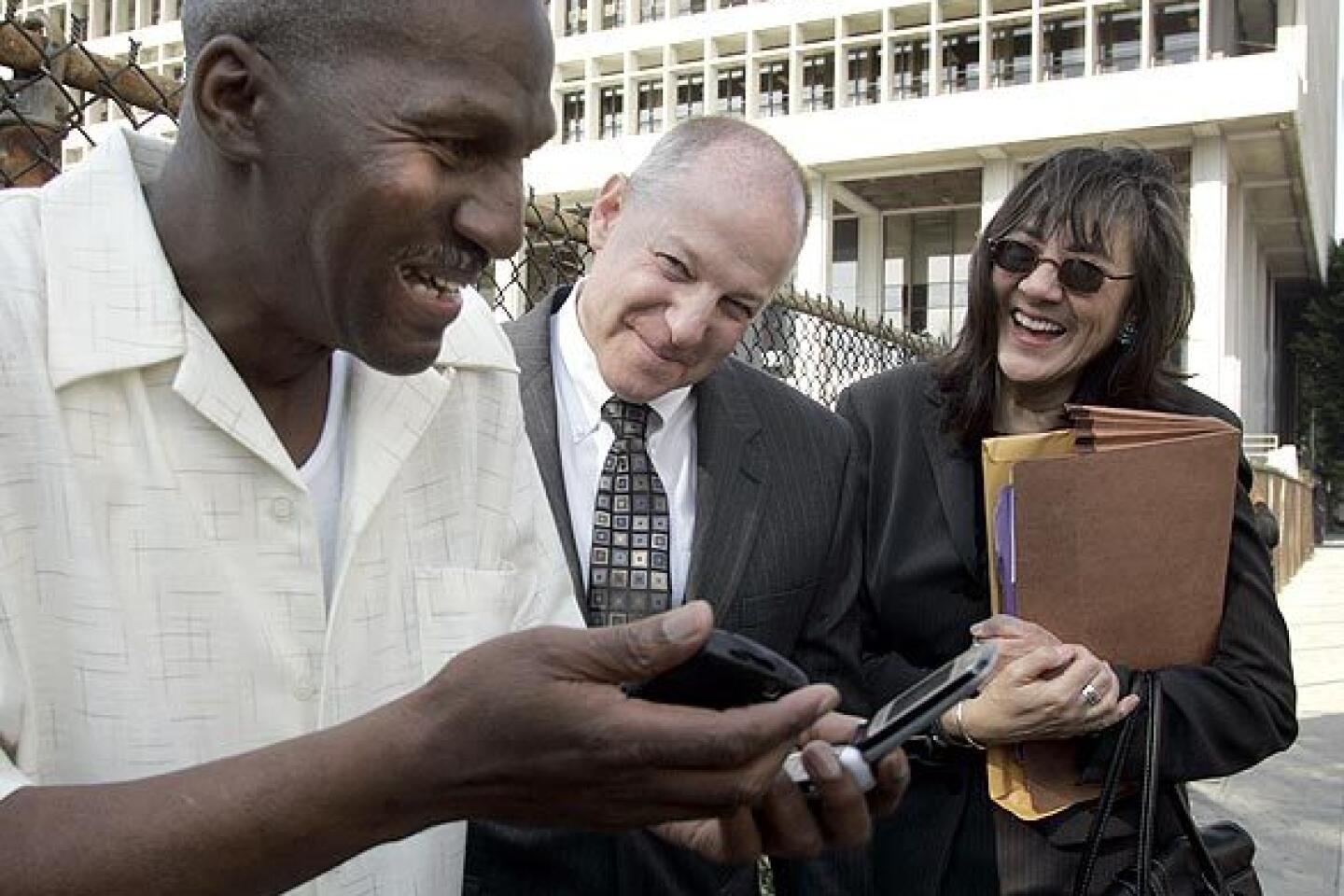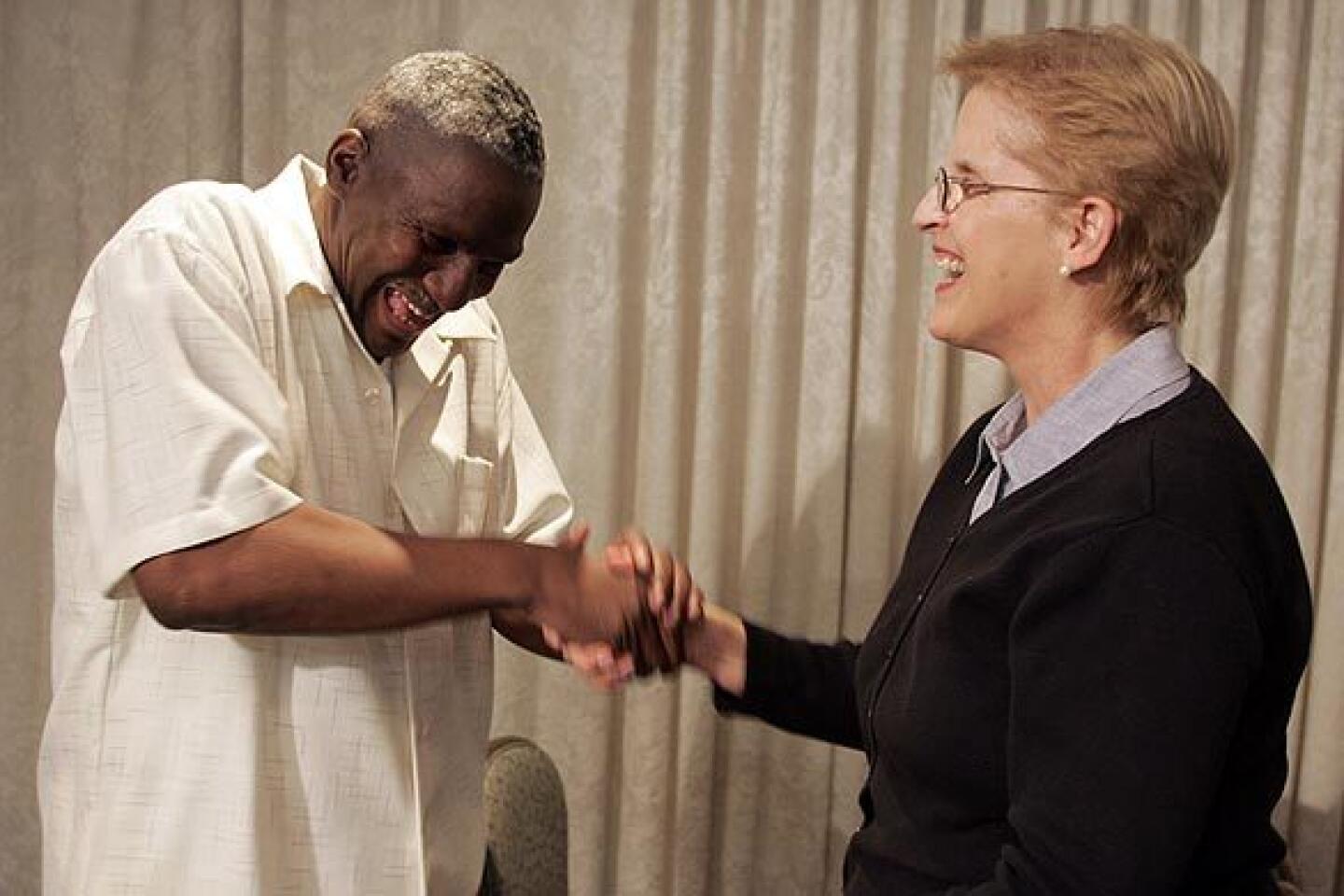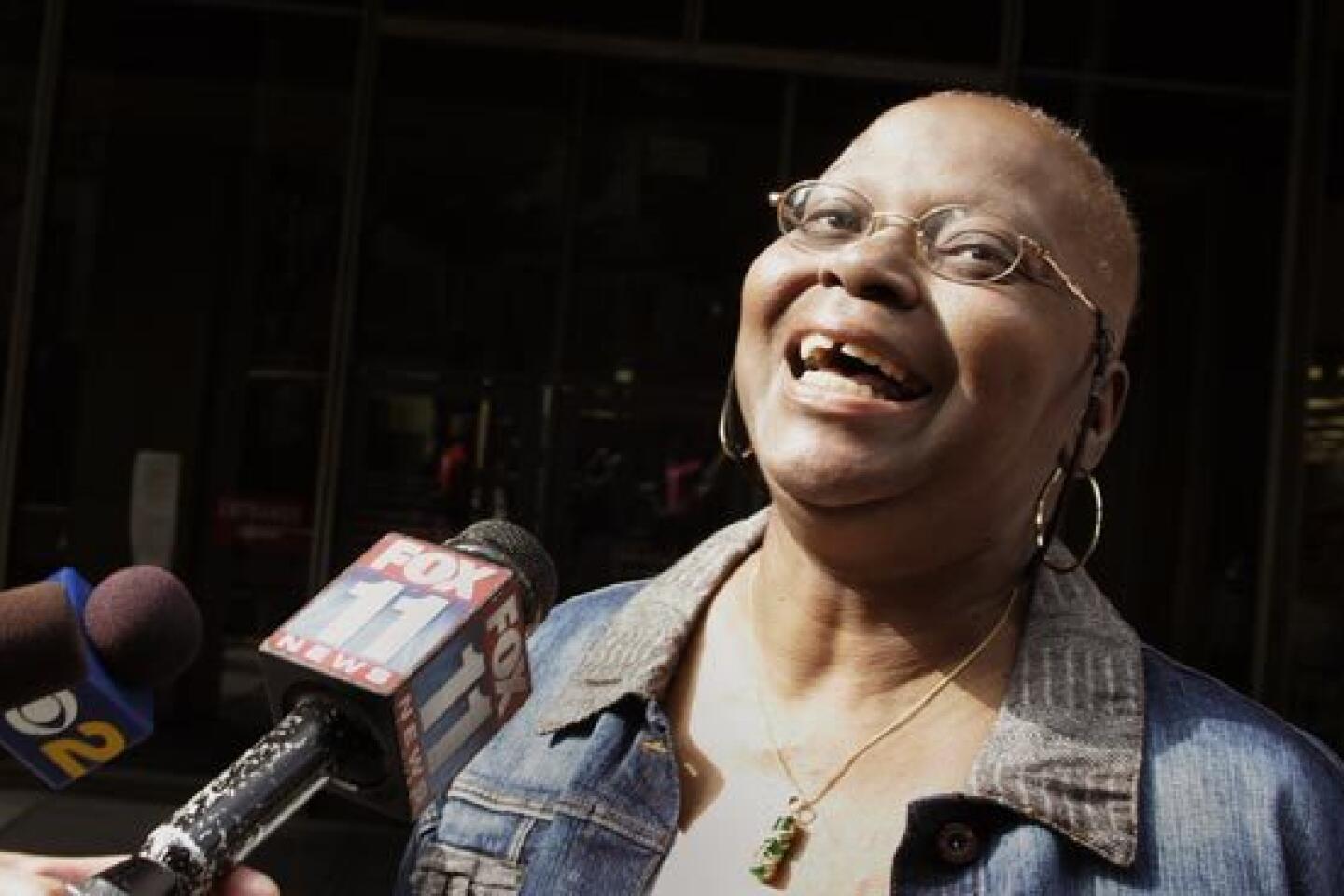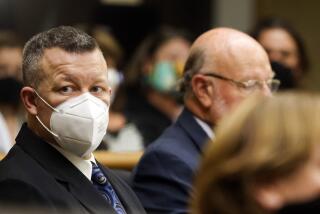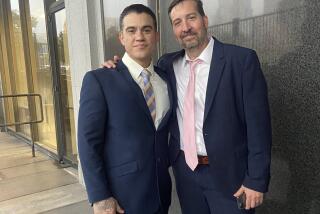Freed after 25 years, former inmate rejoices
Willie Earl Green looked dazed. He walked slowly.
Before him were streets he could stroll freely for the first time since he was young. Behind him were the last of the lockups that had caged him since 1983, for a murder he insists he did not commit.
“It’s like I’m in a dream,” said Green, 56, moments after he stepped into the sunlight outside the downtown Criminal Courts Building, where a judge ordered him released Thursday. The witness whose testimony had sent Green away for 33 years to life recanted, and prosecutors decided not to retry him.
Now, after a quarter-century behind bars, there were all these wonders for Green to behold: cellphones, remote car locks, a hug from his wife that would not be cut short by a prison guard. He sobbed as they embraced at the Kyoto Grand Hotel, around the corner from the courthouse, his first stop on the way to their Chowchilla, Calif., home. “It’s all right, baby,” his wife, Mary, said. “Everything’s all right. . . . It’s time to start living.”
Her husband said he half-expected a guard to tap him on the shoulder, the routine at San Quentin State Prison. “That’s what I’m waiting for,” he said, “for them to come and tell me now, ‘One hug, one kiss, you’re over.’ ”
There was another person to hug Thursday -- Susan Breyer, the forewoman of the jury that found him guilty. “I’m thrilled,” said Breyer, who had come to believe in Green’s innocence. “I, they, took 24 years of his life.”
And Green remarked on all the hugs he could have given -- to his father before he died in 1999, and to Mary before she underwent surgery for breast cancer last year. “I never asked for mercy,” Green said. “I only asked for justice. . . . They can’t hurt me no more. I’m free.”
It was a day of firsts for Green. He drank his first cup of Starbucks coffee. He took it with cream and sugar -- two treats forbidden in state prison. His wife told Green that she would teach him to use her newfangled coffee maker and washing machine when they got home.
The soft-spoken Mississippi native was convicted of fatally shooting a woman at a South Los Angeles crack house. The sole witness, Willie Finley, had placed him at the murder scene, but Green and his lawyers said Finley had lied.
Four years ago, Finley told the lawyers that he had been high on crack the night of the killing and had not gotten a good look at the shooter. He said detectives helped him identify Green.
Last week, L.A. County Superior Court Judge Stephen A. Marcus cited Finley’s new version of events in overturning Green’s conviction. The ruling stopped short of declaring Green factually innocent, but Marcus found that jurors could have exonerated him if they had known the full story.
“Only the person up there, you and perhaps Mr. Finley know exactly what happened that night,” the judge told Green at a hearing Thursday morning. “Don’t let me read about you in the newspaper. As you go about your life, enjoy it.”
About 4:15 p.m., deputies escorted Green from his holding cell, and he stepped haltingly onto the sidewalk outside the courthouse, where TV news cameras awaited him. He was dressed in a white linen suit his wife had brought, a stark change from the prison denims with “PRISONER” stenciled down each leg.
“I was wrongly accused,” Green said. “I’m out now, I’m not bitter. I’m happy today.”
He marveled at his surroundings. At San Quentin, he was allowed out in the yard just three hours during a typical day, his view mostly of the towering walls. “I feel like Cinderella,” he said, gazing at the sky. He pointed at City Hall. “I like that building.”
Then he asked a reporter to let him hold a cellphone, a contraption he had never touched before. He fingered the keypad a bit and carefully relinquished the phone. “Take it back before I drop it,” he said.
He climbed into a rented Chevrolet, buckling up for the short ride to the hotel. “I don’t want to break no laws today,” he said.
At the hotel, an investigator for Green’s legal team demonstrated a remote device to unlock the car. Green watched with delight as the investigator showed him how to open the doors and pop the trunk.
“That is something,” Green said. “Teach me that someday.”
A few minutes later, his arms were wrapped around Mary, who was introduced to him through a friend in 1991, six years after his conviction. Their relationship began with letters; they were married within a year. Until Thursday, they had never been together outside a prison, jail or courthouse.
They celebrated in a small hotel banquet room, with Willie Green wolfing down turkey and cheese sandwiches and mounds of fresh strawberries. He said the San Quentin dinner usually was so bad that he ate only the dessert, filling his belly with Top Ramen bought from the prison store.
Mary Green said she would serve him lobsters Sunday at home, where he would also take his first dip in a whirlpool bath. He shared a shower with two dozen men at San Quentin.
“I want to get that jailhouse smell off me,” he said. He declared his cup of Starbucks far superior to the Big House coffee, known as “John Wayne,” after the way the actor drank it in the movies.
Green had not been a model citizen before his imprisonment. He admits to using drugs and committing petty crimes.
On Thursday, he said prison had set him straight. He worked in the San Quentin library, earned his associate of arts degree and helped run a life-skills program -- parenting, anger management -- for inmates. He also never stopped proclaiming his innocence year after year, until the cell door finally opened.
“The system that put me in here was the same system that got me out,” he said. “It’s not perfect, but it’s the best system in the world.”
More to Read
Start your day right
Sign up for Essential California for news, features and recommendations from the L.A. Times and beyond in your inbox six days a week.
You may occasionally receive promotional content from the Los Angeles Times.
